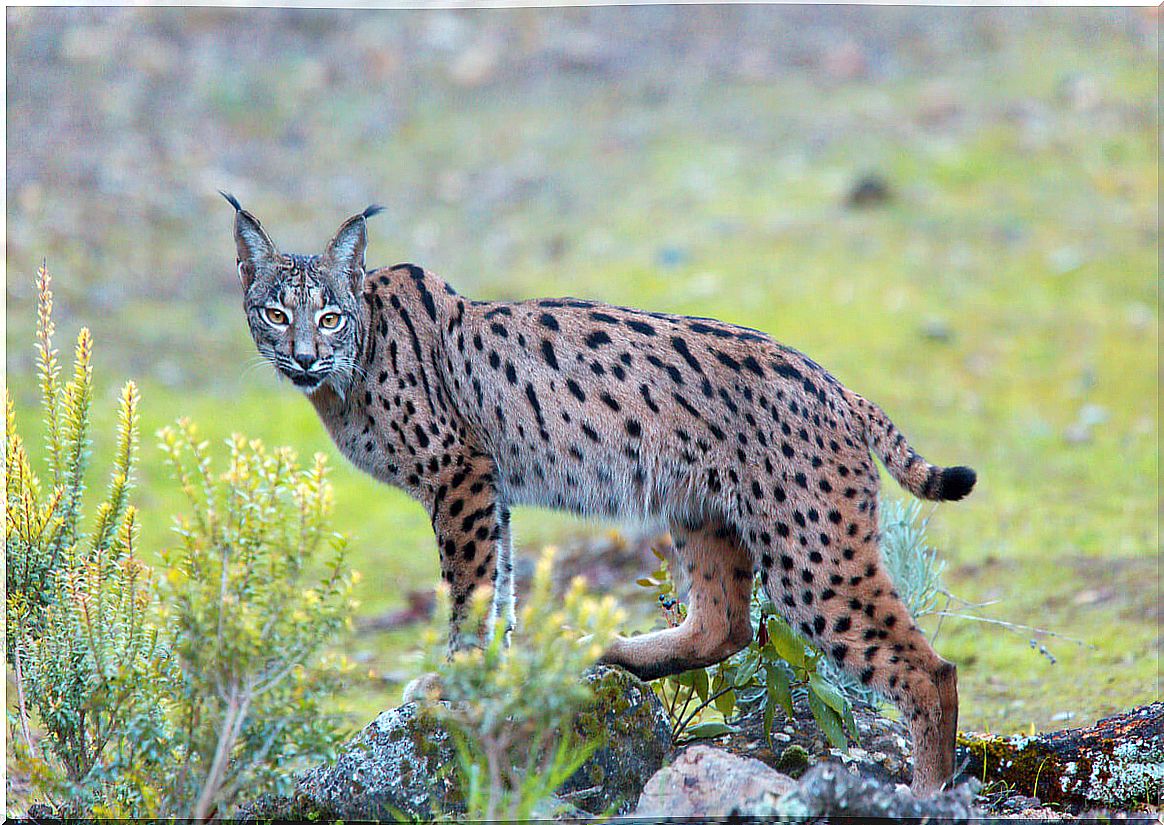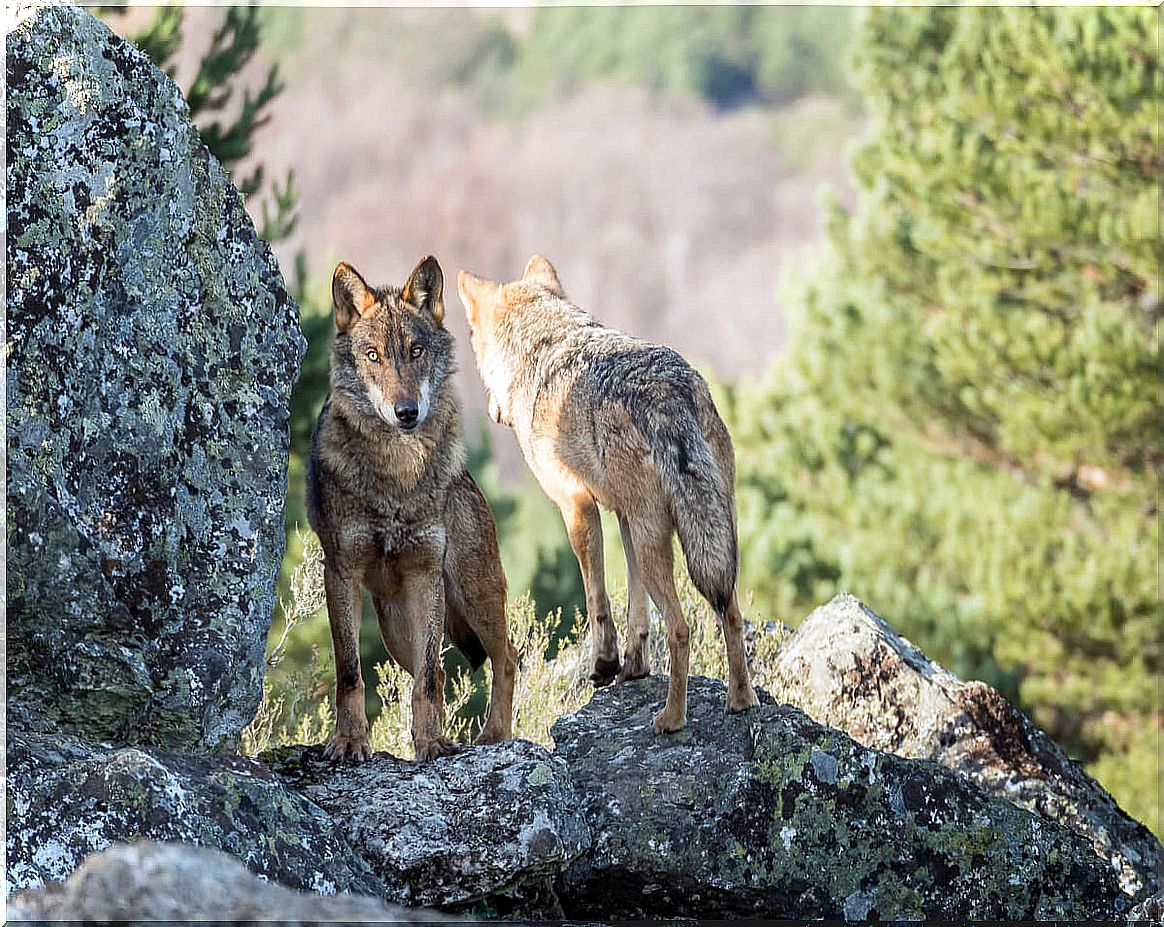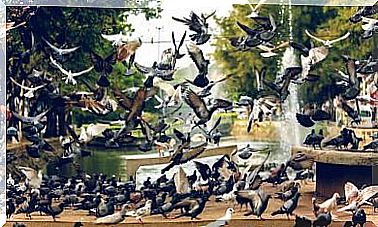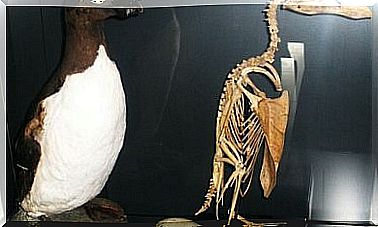Three Species Of Mammals In Danger Of Extinction In Spain

In the Spanish territory there is one of the most important animal biodiversity in Europe. However, numerous external threats are depleting the populations of many species and putting them in danger of extinction.
Mammals, both small and large, are not spared from this global depletion. Today we bring three examples of mammals in danger of extinction in Spain. Keep reading if you want to know more.
The main threats to mammals
Mammals face a multitude of threats, but according to The Red Book of Terrestrial Mammals in Spain , the loss of habitats is identified as the biggest problem. “Spain is full of asphalt and concrete, roads and highways are multiplying in natural spaces and rural areas are urbanizing at a frenzied pace” say the specialists.
The Iberian lynx, resurrected on the brink of extinction
Of all the endangered mammal species in Spain, without a doubt the most iconic is the Iberian lynx ( Lynx pardinus) . Considered the most threatened feline species in the world, this beautiful animal almost completely disappeared at the end of the 20th century.
Among its main threats are poaching and car run-ins, among others. However, it has been proven that the key to their current situation is in the decline of rabbit populations, their main prey.
This, in addition to the disappearance of their potential habitat due to agriculture, gives us an idea of the importance of healthy ecosystems for the future of the species.
At the end of the 1990s, the future of the Iberian lynx was bleak. With just under 100 specimens spread over two different populations in southwestern Andalusia, the species seemed doomed to extinction. However, an ambitious recovery program, based on captive breeding and subsequent release, began to pay off.

The resurrection of the lynx
Today, the Iberian lynx is an emblem of nature conservation worldwide. Its current population is just over 600 specimens, which have expanded beyond the original reduced area near Doñana. Currently, Iberian lynxes are distributed throughout Castilla-La Mancha, Extremadura and even the Community of Madrid.
Although it is still in danger of extinction due to a multitude of threats, mainly due to endless abuses, the truth is that the current situation of the Iberian lynx is hopeful and shows us the enormous possibilities that the recovery of species has if resources are invested in them.
The Pyrenean desman, a small mammal
Among the threatened Iberian fauna, the Pyrenean desman ( Galemys pyrenaicus ) deserves a special section. This small mammal is an aquatic insectivorous animal, which finds its habitat in the rivers and ponds of the northern half of the Iberian Peninsula.
In this case, the main threat looming over the desman is climate change. The progressive reduction of rainfall poses a very serious threat to this mammal, because due to this change the humid environments where it lives are disappearing.
Likewise, the physical barriers built by humans such as dams and reservoirs prevent their dispersal in search of food. Another threat to the desman is the introduction of species such as the American mink, predators of this small mammal.
The Iberian wolf, in danger of extinction
Finally, we are going to talk about one of the best known predators of the Iberian Peninsula, which is threatened against popular belief: the Iberian wolf ( Canis lupus signatus ).
The wolf has never been a popular animal. Their attacks on livestock are more common than desirable and even in the past there has been an attack on humans with a fatal outcome. For this reason, the wolf earned a reputation as a nasty and fearsome beast.
In the 1950s, the Spanish government declared that the wolf was a vermin that had to be exterminated in every possible way, which included the use of traps and poison.
This cruelty caused that, at the beginning of the seventies, the wolf had practically disappeared from the Iberian Peninsula, except for a few dozen specimens.
It was the famous naturalist and popularizer Félix Rodríguez de la Fuente who made the wolf come to be considered a hunting species. With this, he got the use of poisons and traps to be prohibited. Later, this canid was declared a protected species.
Today, the Iberian wolf is booming, but its populations are not yet large enough to sustain itself in the long term. Therefore, it is surprising that wolves can still be hunted north of the Duero River, especially when taking into account that they are still in danger of extinction.

In short, the fauna wealth of Spain is threatened at different levels. Through recovery programs implemented on time, we can ensure the survival of the Iberian desman, lynx or wolf.








